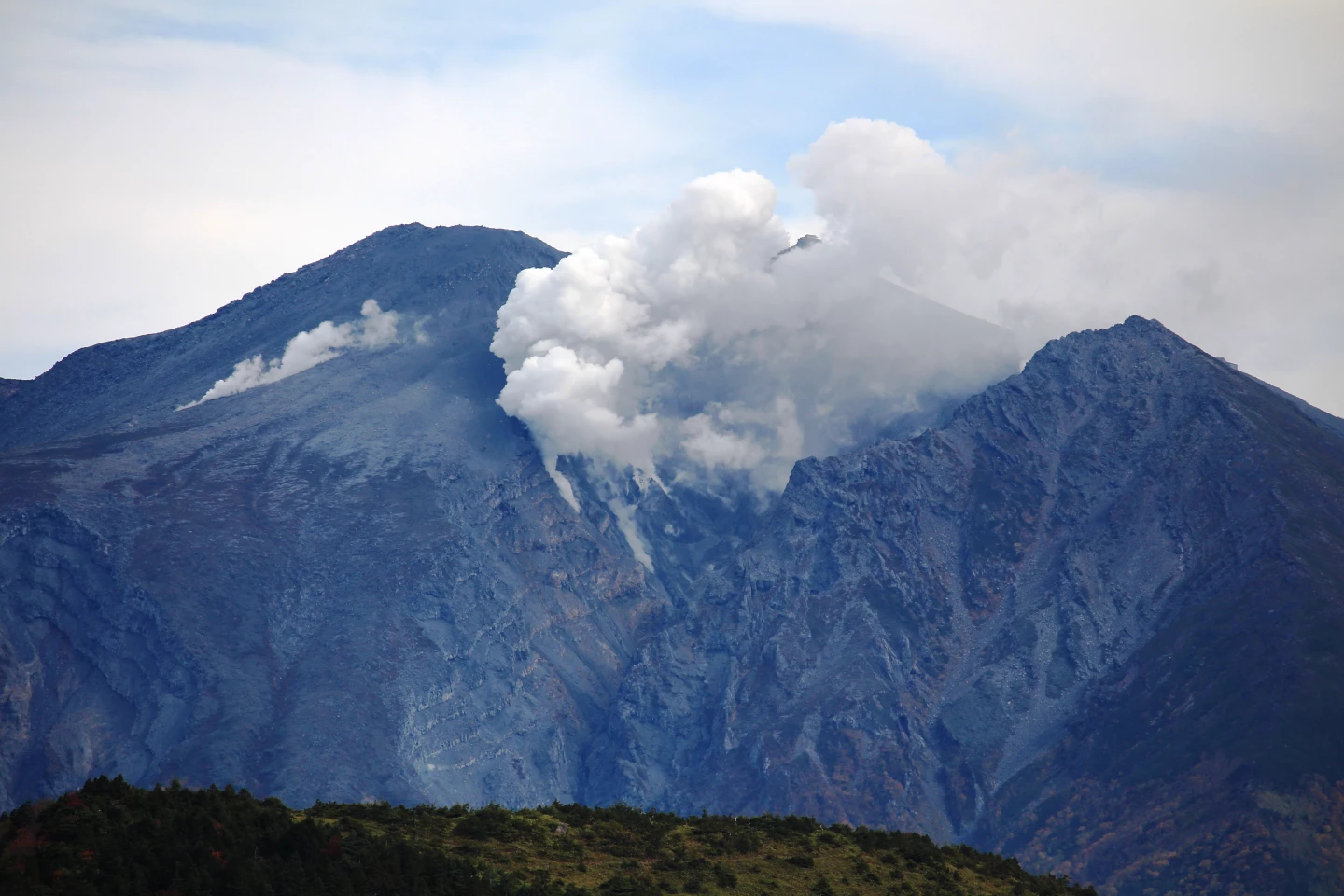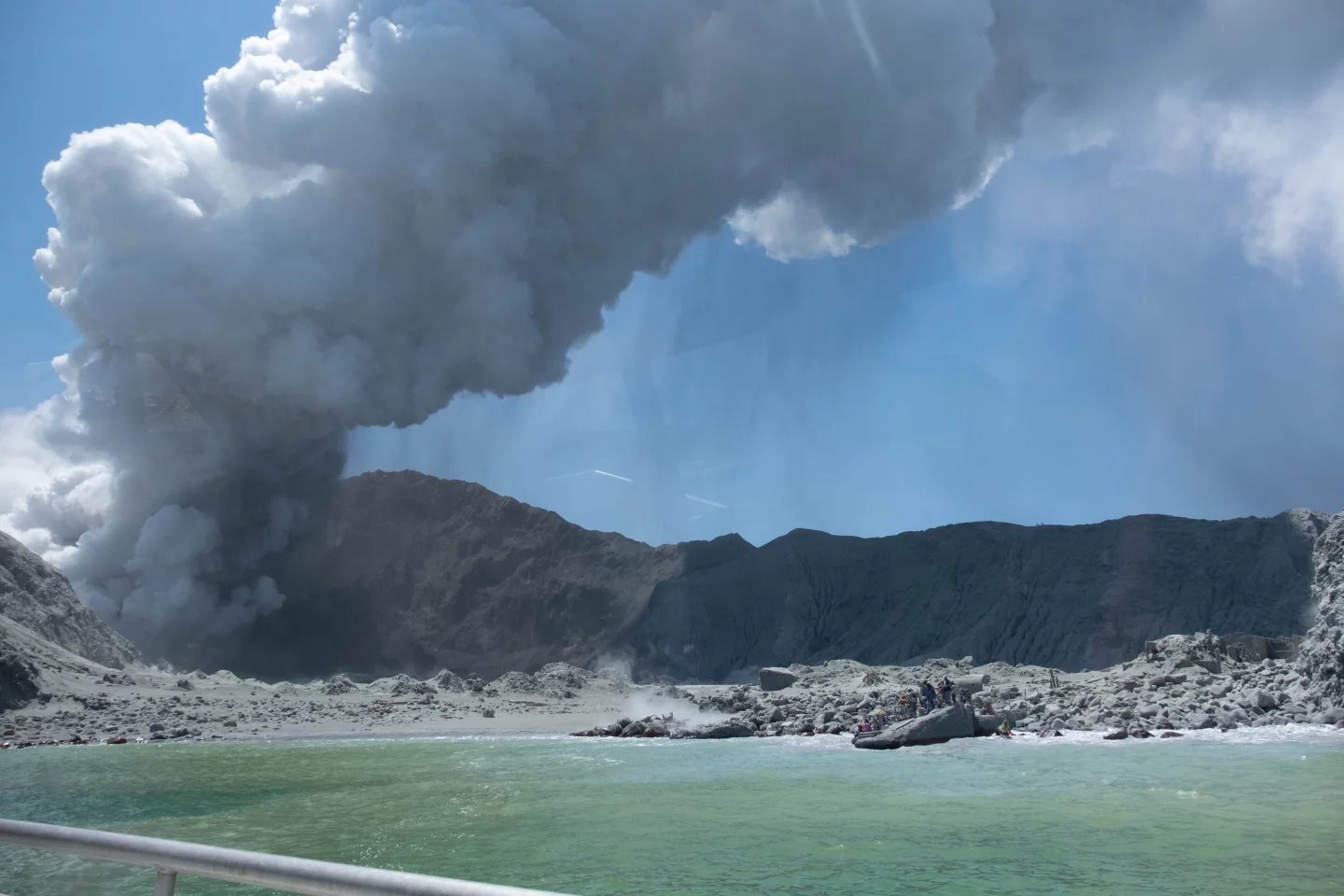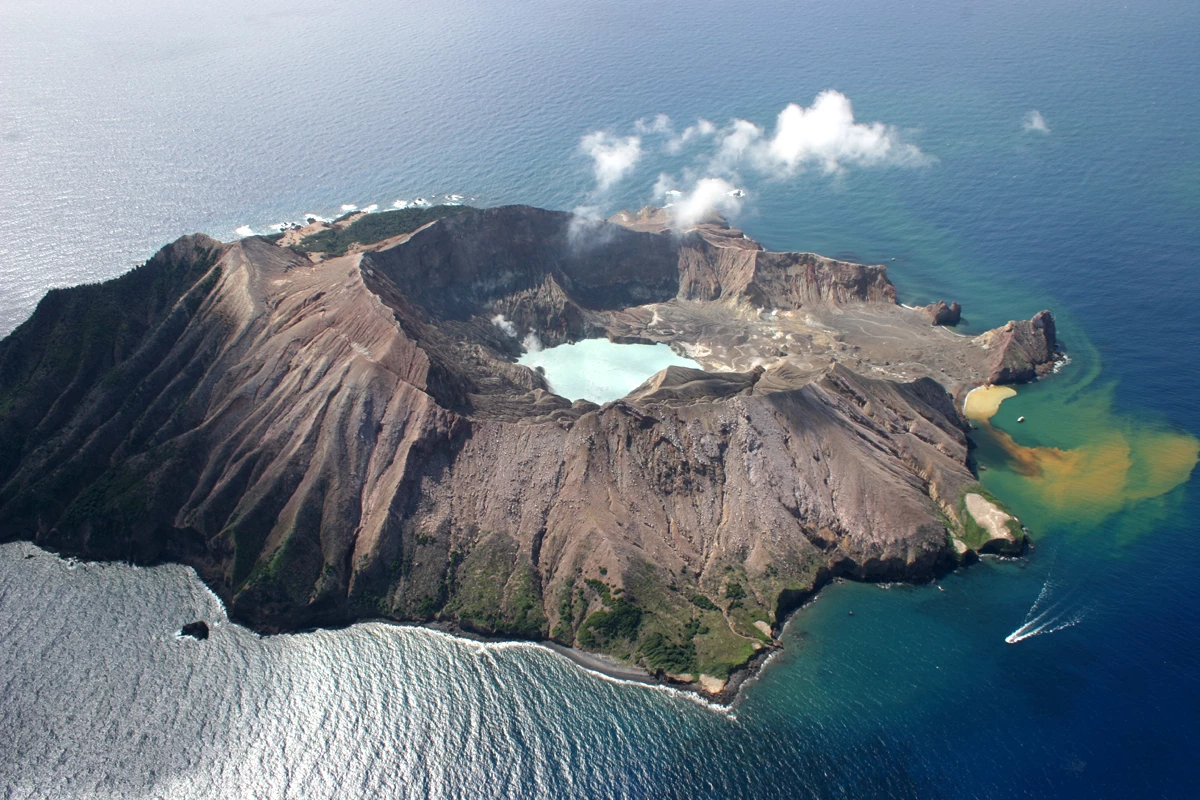White Island, known in Maori as Whakaari, is New Zealand's liveliest cone volcano. Between 1975 and 2000, it was in a constant state of eruption, the longest continuous eruption episode in history, with a number of other eruption episodes occurring between 2012 and 2016. More than 10,000 people visit the island to experience its dramatic landscape every year, so authorities keep a close eye on its activity for signs of volcanic unrest. Despite raising the alert level weeks prior to the devastating events of Monday afternoon, the violent eruption on White Island was not one authorities were able to predict with any precision, owing to the type of delicate, steam-driven processes that led to its explosion.
That these eruptions can take place suddenly and with few or no warning signs is not news to volcanologists. On November 18, New Zealand’s geological hazard monitoring body, GeoNet, raised the Volcanic Alert Level for White Island to Level 2, citing increased sulfur dioxide output stemming from magma deep inside the volcano, along with an increase in volcanic tremor. With an Alert Level 2 comes the warning that conditions “could include eruptions of steam, gas, mud and rocks. These eruptions can occur with little or no warning.”

GeoNet offered updates on November 25 and again on December 3, maintaining the Alert Level 2 and noting both times that “the monitoring observations are similar to those seen in the more active 2011—2016 period” and “suggest that Whakaari/White Island may be entering a period where eruptive activity is more likely than normal.”
By monitoring things like the water levels of the crater lake, the activity of gas and steam pouring out of active vents and seismic activity of the area, volcano experts can recognize the tell-tale signs of a heightened eruption risk. But some types of volcanic eruptions reveal themselves earlier than others, and the subsurface reactions that led to the White Island tragedy are the kind that offer very little warning.
“The type of eruption that happened at White Island is called a phreatic eruption; they can happen at volcanoes around the world and can be relatively common,” Sally Sennert, a geologist at the US Geological Survey, explains to New Atlas. “A phreatic eruption, or steam-driven explosion, can occur when hot material and water – ground water as well as oceans or lakes – contact each other. A phreato-magmatic event is similar but occurs when magma interacts with water. Phreatic eruptions are hard to forecast because there are few if any precursors – like an increased number of earthquakes for example – and those precursors may be short-lived.”
Ticking time bombs

Another example of a sudden and devastating phreatic explosion was the deadly eruption of Japan’s Mount Ontake that is estimated to have killed more than 50 hikers in 2014. This also occurred without any clear warning signs, with subsequent investigations pointing to widespread fracturing of subsurface rock, caused by intensely boiling groundwater, as the trigger for the eruption.
A similar process is thought to have been at play at White Island, in New Zealand’s Bay of Plenty. Shane Cronin, a Professor of Earth Sciences at the University of Auckland, described the machinations of a phreatic explosion in The Conversation this week, writing that water trapped within rock pores can be super-heated by the volcano’s magma to form “vigorous hydrothermal systems.”
The sudden “expansion of water into steam is supersonic in speed and the liquid can expand to 1,700 times its original volume,” the professor writes. This is enough to shatter solid rock and violently eject it, along with ash, hundreds of meters away.
“It appears that gas had built up in the shallow conduit system to overpressure it,” Cronin tells New Atlas. “I suspect high enough pressures for liquid water to exist along with steam at more than 250° C (482° F). These pressures built in the pores and cracks of the crater fill and surrounds and were likely sealed by mineralization, clay formation and possibly sulphur pore-filling materials. Pressures rose beneath the seal until the sudden rupture.”

The possible causes for this rupture are many. It may have been a change in the mix of gases entering into the pores and cracks, or possibly an earthquake. Indeed, GeoNet recorded a magnitude 5.9 earthquake beneath the eastern part of the Bay of Plenty two weeks earlier, on November 24. And this kind of incessant volatility is exactly what makes predicting phreatic eruptions such a difficult task.
“It is hard to see them building up in any seismic or other records, because there is so much natural seismicity and variation in these systems anyway,” Cronin explains. “The gradual nature of the overpressure build up makes it almost impossible to discern. Magmatic eruptions, by contrast, show lots of earthquakes as rocks crack and extend to allow the magma to rise to reach the surface.”
The slow and insidious build-up of these liquid pressure vaults are what makes steam-driven eruptions so much harder to predict, as Oliver Nebel, Associate Professor at Monash University’s School of Earth Atmosphere and Environment, explains.
“Due to the remote nature of the processes, mass movement within the Earth is very difficult to trace,” he says. “Regular monitoring relies on secondary effects such as bulging of the Earth if a magmatic body is gaining volume or enhanced volcanic tremor when magma is moving. For fluids, these secondary signs are virtually absent. Earthquakes only occur seconds or minutes beforehand. A forecast or early warning is simply not possible. All we know is that the volcano is active, so that an eruption will occur at one point.”
An educated guess

The Lascar Volcano in the Chilean Andes is one that undergoes spontaneous phreatic eruptions every two to five years, on average. Surrounding one such eruption in October of 2015, a team of scientists from Germany and Chile pulled together retrospective data from cameras and seismic, gas and temperature sensors in an effort to piece together the events leading up to the explosion.
The scientists recorded several signs of volcanic unrest, including heightened seismic activity, fluctuating sulfur dioxide levels, along with heavy rainfall around 10 days prior to the eruption. Writing in the journal Natural Hazards and Earth System Sciences,” the team “conjectures” that this precipitation event affected gases within the volcano dome and created a short burst of pressure that ultimately led to the phreatic explosion. Despite their rigorous approach involving different data and the benefit of hindsight, the complexities in anticipating these eruptions became readily apparent.
“This study shows the chronology of events culminating in a steam-driven explosion but also demonstrates that phreatic explosions are difficult to forecast, even if the volcano is thoroughly monitored,” the researchers wrote.
Even if you could figure out what causes one volcano to erupt, those lessons would be unlikely to help elsewhere. Each has its own unique and complex system of water, gases, magma, vents, chambers, rocky layers and craters, which together make up a delicate architecture of many moving parts. What upsets one is unlikely to upset another.
“These systems are so dynamic that all changes must be looked at in relation to past experiences at each system,” Cronin tells us. “In short, it is very hard to see whether surface change equates to a higher risk of explosion.”
Studies like the ones carried out on the Lascar Volcano and Mount Ontake can further our understanding of how these eruptions take place, and some of the things to look out for in the future. But adding things like depth and pressure sensors to monitor volcano systems such as White Island is quite risky and “could trigger eruptions,” according to Cronin. So the prospect of more sophisticated, real-time monitoring systems is unlikely.
“As far as anticipating these kinds of events – instruments and modeling improve but forecasting a natural event will never be perfect,” says Sennert. “I often relate volcanic events to those people may be more familiar with, like the weather. Meteorologists can warn that weather conditions are tornadic, but they cannot say with 100 percent certainty that a tornado will form and they certainly can't say how long the tornado will last and what path it will take.”







